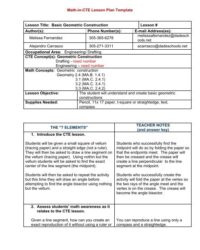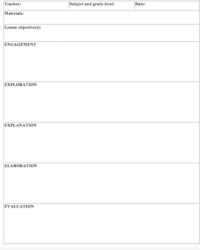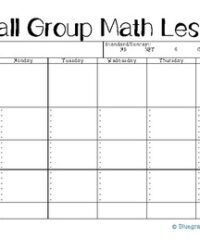The “I Do, We Do, You Do” teaching model is a cornerstone of effective instruction, especially when it comes to the often-challenging world of mathematics. This structured approach provides a clear pathway for students to grasp new concepts, moving from direct teacher guidance to independent mastery. It’s about building confidence and competence step by step, ensuring no learner is left behind in the journey towards understanding complex mathematical ideas.
This pedagogical framework is particularly powerful in math because it systematically addresses the need for explicit instruction, guided practice, and independent application. Mathematics often requires a strong foundation in procedures and conceptual understanding before students can confidently tackle problems on their own. By breaking down the learning process into these distinct phases, teachers can effectively differentiate instruction and provide targeted support, making abstract math concepts more accessible and concrete for every student in the classroom.
Deconstructing the “I Do, We Do, You Do” Framework for Math
The “I Do, We Do, You Do” model serves as a highly effective scaffold for introducing, practicing, and mastering new math skills. Each phase plays a crucial role in the learning progression, ensuring students move from passive observation to active engagement and ultimately, independent proficiency. It’s a cyclical process that can be revisited as needed for different topics or struggling learners.
The “I Do” phase is where the teacher takes center stage, explicitly demonstrating the new math concept or skill. This isn’t just about showing how to solve a problem; it’s about thinking aloud, verbalizing the thought process, explaining the why behind each step, and clarifying potential pitfalls. For instance, when teaching long division, the teacher would not only perform the steps but also articulate their reasoning for placing numbers, checking remainders, and estimating quotients. This transparent modeling is vital for students to build a mental framework for the process.
Following the initial demonstration, the “We Do” phase invites students into collaborative practice. Here, the teacher guides students through problems, working together as a class, in small groups, or with partners. This is the prime opportunity for students to try out the new skill with immediate feedback and support. The teacher might pose questions, prompt for student input on next steps, or facilitate peer-to-peer discussions. It’s a low-stakes environment where misconceptions can be addressed quickly and confidently before independent work begins.
Finally, the “You Do” phase empowers students to apply what they’ve learned independently. This could involve individual practice problems, problem-solving tasks, exit tickets, or even a quiz. The goal here is to assess individual understanding and allow students to solidify their mastery. It’s important that problems in this phase mirror the complexity of those demonstrated and practiced, allowing students to demonstrate their acquired skills without excessive struggle. This phase helps teachers gauge the effectiveness of their instruction and identify areas where additional support may be needed.
Crafting Effective “I Do” Examples
When preparing your “I Do” examples for a math lesson, focus on clarity and step-by-step thinking. Don’t rush through the process. Use visual aids like whiteboards or projectors to clearly show your work. Verbally narrate every decision, every calculation, and every conceptual leap you make. Anticipate common student errors and address them proactively during your modeling. For example, if teaching fraction addition, show common denominator finding clearly, explaining why it’s necessary before combining numerators.
Maximizing “We Do” Engagement
To make the “We Do” phase truly effective, encourage active participation from all students. Use strategies like “turn and talk” for students to discuss problems with a partner, or utilize mini-whiteboards for quick responses. Circulate around the room, providing immediate targeted feedback. Resist the urge to simply give the answer; instead, ask guiding questions that lead students to discover solutions themselves, fostering deeper understanding and critical thinking skills.
This progression ensures that every student, regardless of their prior knowledge or learning style, has multiple opportunities to encounter, interact with, and ultimately master new mathematical concepts. It builds confidence by reducing the initial intimidation of new material and gradually increasing the level of independence.
Building Your Own i do we do you do math lesson plan template
Creating a consistent i do we do you do math lesson plan template can be a game-changer for any math educator. It provides a structured framework that ensures all key elements of effective instruction are included in every lesson, promoting consistency, efficiency, and ultimately, better student outcomes. A well-designed template helps you visualize the flow of your lesson and allocate appropriate time for each phase, preventing lessons from becoming too teacher-centric or immediately overwhelming for students.
Having a standardized template also simplifies lesson planning, especially when dealing with multiple topics or different class periods. You won’t have to reinvent the wheel for each new concept. Instead, you can focus your energy on crafting compelling problems, anticipating student questions, and designing engaging activities for each specific phase. This not only saves time but also leads to more thoughtful and comprehensive lesson designs.
When developing your template, consider what essential components you need to plan for each phase to ensure a robust and student-centered learning experience. It’s more than just labeling sections; it’s about thinking through the activities, questions, and resources that will best support student learning in each stage of the “I Do, We Do, You Do” progression.
Here are some key elements to include in your i do we do you do math lesson plan template:
- Learning Objectives: Clearly state what students will know and be able to do by the end of the lesson.
- Materials Needed: List all resources, manipulatives, or technology required.
- “I Do” Section: Detail the specific steps of your modeling, examples you will use, and key questions you’ll ask while demonstrating.
- “We Do” Section: Outline guided practice activities, collaborative tasks, discussion prompts, and the types of feedback you’ll provide.
- “You Do” Section: Describe independent practice problems, assessment methods, or follow-up activities.
- Differentiation Strategies: Notes on how you will support struggling learners and challenge advanced students.
- Assessment: How will you gauge student understanding at various points in the lesson?
- Reflection/Next Steps: Space for post-lesson notes on what worked well and what to adjust for future instruction.
By systematically applying the “I Do, We Do, You Do” model through a well-designed template, math educators can create dynamic and effective learning environments where students feel supported and empowered to tackle new challenges. This approach fosters a deeper understanding of mathematical concepts and builds the confidence necessary for long-term success.
Embracing this structured methodology provides a clear roadmap for both teachers and students, ensuring a coherent and progressive learning journey in mathematics. It’s a powerful tool for transforming complex ideas into achievable learning objectives and guiding every student toward mastery.


